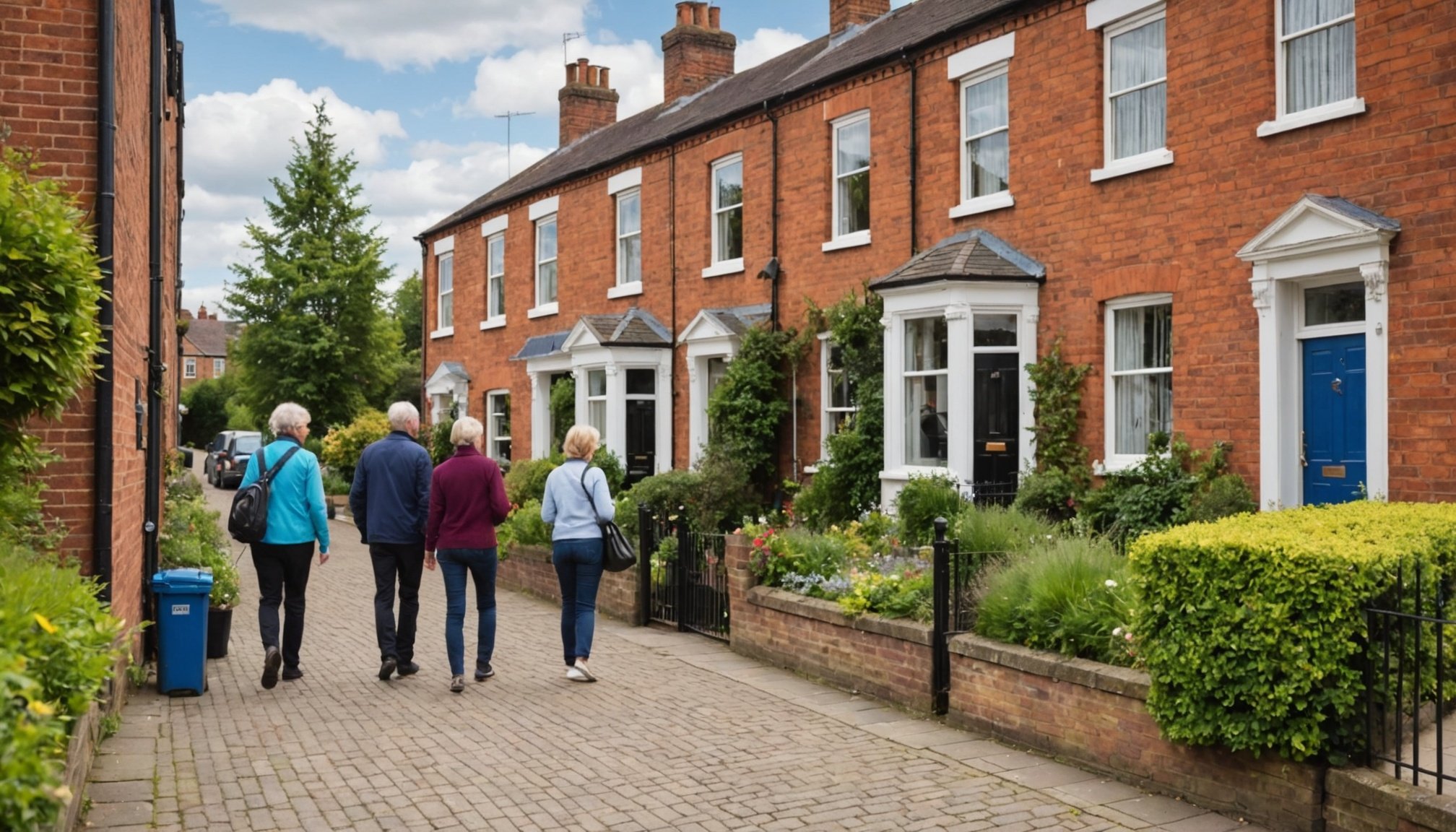Understanding the Importance of Notifying Neighbors
Neighbourhood etiquette in the UK places a significant emphasis on notifying neighbors. This practice fosters harmonious community relations and is vital for maintaining good living environments. The importance of communication cannot be overstated, as it builds trust and mutual respect among residents.
In the UK, keeping open lines of communication is a community tradition. It is not just polite; it solidifies the ties that keep neighbours feeling connected. Whether you are planning a move, holding an event or undertaking renovations, informing your neighbours in advance is considered a courteous gesture. This forward-thinking approach can mitigate misunderstandings and ensures that everyone feels informed and considered.
Lire également : Essential Tips for Discussing Sensitive Personal Items with Your Movers
Failing to inform your neighbours can lead to unnecessary tension or conflicts. At its worst, it can damage long-standing community relations. For instance, unexpected noise or disruptions from a move might surprise and upset unaware neighbours, creating avoidable disputes. By proactively communicating, you not only preserve but enhance neighbourhood ambiance.
Thus, notifying neighbors is both a respectful and strategic practice. It enables a collaborative atmosphere where individuals coexist peacefully. Reliable communication lays the foundation for a supportive neighbourhood environment, benefiting all residents. Taking the step to inform can make a significant difference in neighbourhood dynamics.
A découvrir également : Essential Tips for Maintaining Strong Internet Connectivity When Relocating to a Remote UK Area
Legal Obligations for Notifying Neighbors
In the United Kingdom, property laws emphasize the importance of being considerate and ensuring legal requirements are met when engaging in construction or alterations that might affect neighboring properties. At the heart of these regulations are formal protocols that seek to balance the rights and responsibilities of property owners.
Under UK property laws, it is often obligatory to inform neighbors of any planned changes. This can be through party wall notices or planning application notifications, depending on the nature and scale of the project. Specific UK regulations mandate that written notice be given in advance, allowing sufficient time for any disputes or objections to be lodged and resolved amicably.
This formal notification is not just a procedural formality but a cornerstone for compliance. Adhering to these requirements minimizes potential conflicts, prevents legal hurdles, and fosters goodwill with neighbors. Moreover, failure to comply with these protocols could result in delays, fines, or enforced halts to the projects.
Emphasizing compliance with property laws ensures a smoother transition and underscores the importance of establishing open communication with affected parties, paving the way for harmonious and legally sound neighborhood relations.
Best Practices for Neighborly Communication
Building strong connections with your neighbors can vastly improve your community experience. Here are some essential communication tips to keep in mind:
A respectful and informative notification letter is key when you need to communicate changes, such as moving or renovations. Begin with a polite greeting and outline the purpose of your letter. Ensure your tone remains friendly. Communify any disruptions you envisage, and offer contact information for further discussion.
Timing considerations are crucial to ensure smooth communication. When notifying about moving or potential noise from renovations, provide ample notice. This allows your neighbors to prepare or voice concerns without feeling pressured. Try to avoid major holidays or weekends when they may be less available to engage in a conversation.
Addressing potential concerns requires tact and empathy. When you anticipate issues, discuss them openly and offer solutions or compromises where possible. Acknowledging their perspective fosters understanding and reduces friction. Remember, neighbor etiquette is about mutual respect and community wellbeing.
- Craft letters with polite language.
- Offer an open line for questions or follow-ups.
- Choose the right moment to notify neighbors.
Mastering these practices ensures harmonious neighbor relations, allowing you to foster a supportive and welcoming community environment.
Templates for Notification Letters
Navigating the nuances of crafting notification letters can be streamlined with ready-made templates. Whether formal or informal, notification letter templates simplify communication, enhancing clarity and effectiveness.
Informal Notification Letter Template
An informal notification letter is well-suited for situations where a casual tone is appreciated. This could involve notifying a neighbour about a community event. Ensure that the tone remains friendly and approachable. For instance, you might say, “Hey [Neighbor’s Name], just a quick note to let you know about the gathering happening on [Date] at [Location]. Hope to see you there!” Such templates foster goodwill and enhance communal bonds.
Formal Notification Letter Template
Formal notification letters are ideal for official communications, such as informing landlords or service providers. The key elements include a clear subject, concise language, and necessary details. An example might start with, “Dear [Title/Name], this letter serves to inform you about [Event/Change] happening on [Date]. Kindly acknowledge receipt.” These templates maintain professionalism, ensuring messages are conveyed with respect and accuracy.
Text or Email Notification Template
Adapting a notification letter for texts or emails involves brevity while maintaining essential details. Personalise the message by including the recipient’s name, as in “Hi [Name], just wanted to let you know about [Event/Change] on [Date] at [Location].” Customizing templates with personal touches tailors the communication, making it more relatable.
Managing Responses from Neighbors
Every move to a new community comes with its own set of challenges, one of which is handling neighbor responses. You might wonder, “How do I navigate various reactions from my new neighbors?” Be prepared for a mix of greetings, curiosity, and sometimes, apprehension. Each reaction requires a tailored approach.
Conflict resolution becomes crucial if responses are lukewarm or if misunderstandings arise. Address potential issues by initiating open communication. Encourage dialogue over assumptions and make an effort to understand the perspectives of your neighbors.
Another strategy is to welcome community feedback. Positive, constructive feedback provides an opportunity to learn and align with the community’s norms. Engage in community events or neighborhood activities to showcase a genuine interest in being part of the community.
Maintaining good relationships post-move is of paramount importance. Foster an environment of cooperation by respecting neighborhood customs and contributing to community life. Such efforts can lead to smoother integration and create a sense of belonging.
In essence, managing neighbor responses is a dynamic process that involves understanding, patience, and proactive engagement. Embrace these principles, and navigating your new neighborhood will become an enriching experience.
Community Impact of Your Move
Moving to a new area doesn’t just affect you; it plays a part in reshaping neighborhood dynamics and the community effects it embodies. When a new resident arrives, there’s an opportunity to influence local engagement positively, redefining how people interact and support each other.
Understanding the impacts of your relocation begins with considering how you can encourage neighborly support. Simple actions like introducing yourself can strengthen ties and enhance local engagement. A warm greeting helps establish trust early on, and participating in local events can further drive community involvement. These activities foster a sense of belonging and can even lead to long-lasting friendships.
To effectively integrate as a new resident, embracing some best practices can ease this transition. Consider attending neighborhood meetings or volunteering for community projects. Genuine interest in the local culture aligns with fostering respectful relationships, promoting harmony and unity. Furthermore, supporting local businesses can contribute to the area’s economic growth and vitality.
Positive community impact isn’t just about fitting in; it’s about contributing and enhancing what’s already there. Your presence can make a significant difference, sparking change and encouraging others to get involved in making the neighborhood a vibrant and supportive place.











